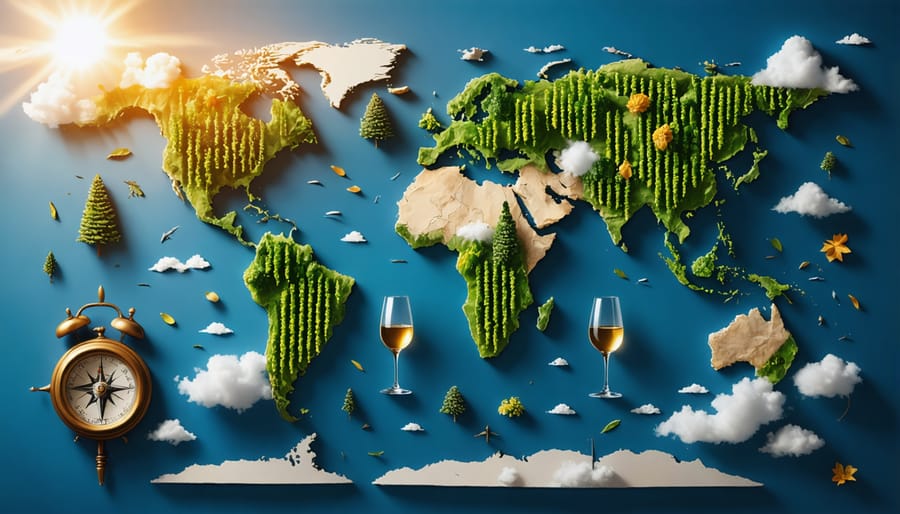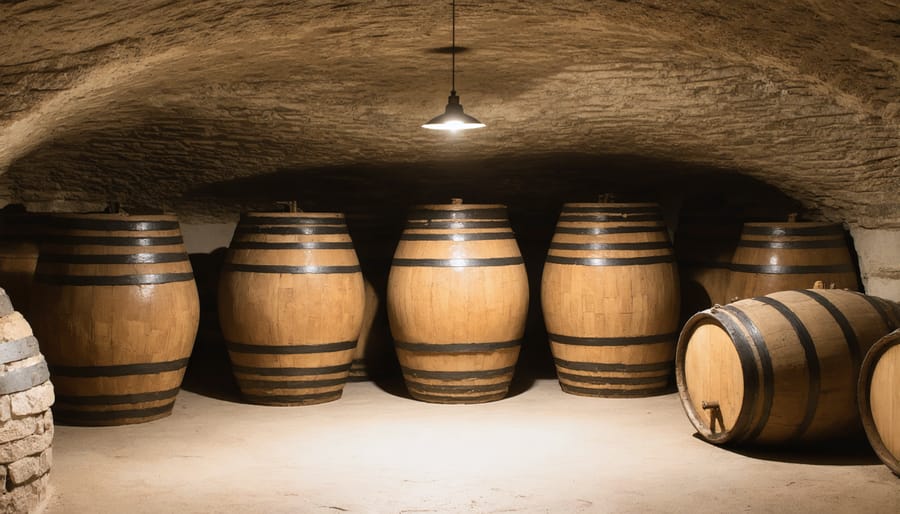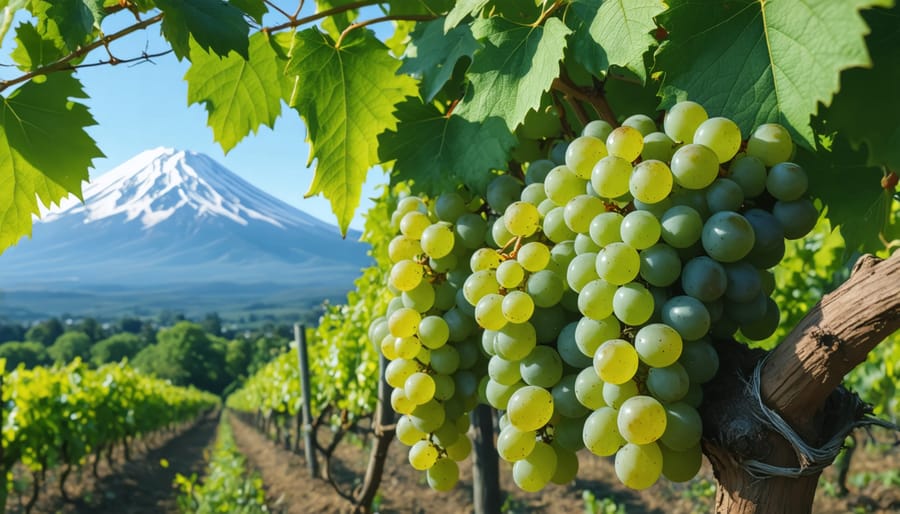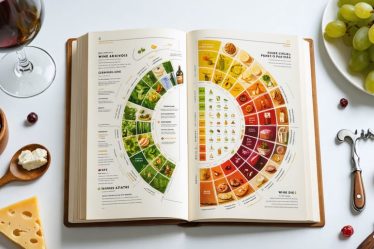
Venture beyond the familiar territories of Bordeaux and Tuscany – a new world of extraordinary wines awaits in unexpected corners of the globe. While exploring global wine regions, savvy wine enthusiasts are discovering hidden gems in places like Slovenia’s Brda region, where ancient Roman vineyards are experiencing a modern renaissance, and Uruguay’s Canelones, where the Tannat grape has found its second home. These emerging regions aren’t just producing interesting alternatives – they’re crafting wines that rival traditional powerhouses in quality and character, often at more accessible price points.
What’s driving this wine revolution? Climate change has opened new frontiers for viticulture, while modern technology and ambitious winemakers are pushing boundaries in previously overlooked territories. From England’s sparkling wines challenging Champagne to China’s promising Ningxia region, these rising stars are rewriting the rules of winemaking and offering sophisticated palates fresh territory to explore.
Let’s embark on a journey through these emerging wine regions, where tradition meets innovation, and discover why they deserve a place in your wine collection and on your travel bucket list.
Why These Rising Wine Regions Matter Now
The wine world is experiencing a fascinating transformation, and it’s not just about what’s in your glass – it’s about where it comes from. Climate change has become a game-changer, pushing traditional wine regions to adapt while opening doors for new areas to shine. As temperatures shift, regions once considered too cool for grape growing are now producing exceptional wines, while established areas are exploring different varieties better suited to warmer conditions.
But there’s more to this story than just climate. Today’s wine lovers (myself included!) are more adventurous than ever, seeking out unique flavors and authentic experiences. We’re increasingly interested in sustainable wine production, supporting smaller producers, and discovering wines that tell compelling stories about their origins.
Technology is another driving force behind these emerging regions’ success. Modern winemaking equipment, improved vineyard management techniques, and better understanding of soil science have leveled the playing field. Regions that might have struggled to produce quality wines decades ago can now craft bottles that compete with the world’s finest.
Social media and digital marketing have also played a crucial role, allowing lesser-known wine regions to share their stories directly with consumers. I’ve discovered some of my favorite wines through Instagram posts showing stunning vineyards in unexpected places and winemakers sharing their passion projects.
What’s particularly exciting is how these changes are making wine more accessible and inclusive. New regions often offer excellent value, allowing wine enthusiasts to explore premium wines without the premium price tags of more established areas. They’re also bringing fresh perspectives to winemaking, often embracing innovative practices and sustainable methods that resonate with contemporary values.
This evolution in the wine world isn’t just about finding new places to grow grapes – it’s about adapting to our changing world while preserving what we love most about wine: its ability to bring people together and create memorable experiences.
Eastern Europe’s Wine Renaissance

Slovenia’s Hidden Alpine Treasures
Nestled between the Alps and the Adriatic Sea, Slovenia’s wine scene is like discovering a hidden jewelry box filled with unexpected treasures. I first encountered Slovenian wines at a small dinner party, where a friend poured what she called “orange wine” – a uniquely amber-colored creation that’s become the country’s calling card in the wine world.
The star of Slovenia’s wine story is the Rebula grape, thriving in the terraced vineyards of Goriška Brda, often called the “Tuscany of Slovenia.” These golden-skinned grapes produce wines with notes of apricot, quince, and fresh herbs that perfectly capture the region’s Mediterranean-meets-Alpine character.
What makes Slovenian wines truly special is their commitment to natural winemaking traditions. Many vintners still age their whites in clay amphoras, creating those distinctive orange wines that have wine enthusiasts buzzing. The process involves leaving white wine grape skins in contact with the juice, resulting in complex flavors and a gorgeous amber hue.
Don’t miss trying Zelen and Pinela, two indigenous varieties you’ll rarely find elsewhere. These grapes produce crisp, aromatic whites that pair beautifully with the country’s alpine-inspired cuisine. Slovenia’s small production means these wines can be harder to find, but trust me – the hunt is worth it!
Georgia: Where Ancient Meets Modern
Picture this: nestled between the Black Sea and the Caucasus Mountains lies Georgia, where wine isn’t just a beverage – it’s an 8,000-year-old love story. I first encountered Georgian wine at a small natural wine bar, and let me tell you, it was a complete game-changer!
The heart of Georgia’s winemaking tradition lies in its qvevri – large clay vessels buried underground where wine ferments naturally. These egg-shaped containers create incredibly unique wines with amber hues and complex flavors that tell stories of ancient traditions. It’s fascinating how this method, passed down through generations, is now capturing the attention of wine enthusiasts worldwide.
But Georgia isn’t stuck in the past. Modern winemakers are brilliantly blending ancestral techniques with contemporary innovation. You’ll find crisp, clean whites made with state-of-the-art equipment alongside traditional skin-contact amber wines. Local varieties like Rkatsiteli and Saperavi are getting makeovers that respect their heritage while appealing to modern palates.
What makes Georgian wines especially exciting is their versatility. Whether you’re hosting a dinner party or looking for something special to pair with your favorite cheese board, these wines offer something unique. Many are naturally lower in sulfites and additives, which speaks to our growing interest in natural and sustainable wines.
For those ready to explore, start with a Rkatsiteli made in qvevri – it’s like nothing you’ve tasted before!

Asia’s Unexpected Wine Havens

Japan’s Unique Koshu Wines
Picture yourself sipping wine while gazing at Mount Fuji – sounds dreamy, right? Japan’s wine scene might surprise you, with its Koshu grape variety leading a quiet revolution in the wine world. Growing in the pristine Yamanashi Prefecture, these grapes have adapted perfectly to Japan’s humid climate over a thousand years.
What makes Koshu wines so special? Their delicate, citrusy notes and subtle floral aromas create an elegant profile that perfectly complements Japanese cuisine. Think gentle hints of yuzu, white peach, and jasmine, with a minerality that speaks of the volcanic soils where the grapes are grown.
I recently attended a Japanese wine tasting where the hostess paired Koshu wine with sashimi – it was a match made in heaven! The wine’s crisp acidity and light body enhanced the fresh fish without overpowering it. This versatility makes Koshu wines increasingly popular among food enthusiasts looking for something unique.
Japanese winemakers have embraced both tradition and innovation. Many vineyards use the distinctive pergola training system, where vines are grown high off the ground to combat humidity. This method, combined with modern winemaking techniques, results in wines that are distinctly Japanese yet internationally appealing.
If you’re looking to explore these wines, start with a young Koshu – they’re typically fresh, clean, and wonderfully approachable. Most bottles are reasonably priced, making them perfect for your next dinner party or Asian-inspired meal.
China’s Premium Wine Revolution
When I attended a wine tasting event last summer, I was blown away by a sophisticated Cabernet Sauvignon that turned out to be from Ningxia, China’s premier wine region. Like many wine enthusiasts, I’d never imagined China would become a serious contender in fine wine production, but the country’s wine revolution is impossible to ignore.
Nestled between the Yellow River and the Helan Mountains, Ningxia has emerged as China’s answer to Bordeaux. The region’s high altitude, abundant sunshine, and mineral-rich soil create perfect conditions for growing premium wine grapes. Local winemakers are combining French expertise with Chinese innovation, producing elegant reds that are winning international awards.
But Ningxia isn’t alone in this revolution. Shandong Province, with its coastal climate, is making waves with delicate white wines, while Yunnan’s high-altitude vineyards are experimenting with unique varieties that thrive in mountain conditions. These regions benefit from significant government investment and partnerships with established European vintners.
What makes Chinese wines particularly exciting is their ability to pair beautifully with Asian cuisine. I’ve found that a Ningxia Cabernet complements Peking duck perfectly, while Shandong’s whites are lovely with seafood dishes. As these regions continue to refine their craft, they’re not just producing wine – they’re creating a new chapter in wine history that bridges East and West.
How to Experience These New Wine Regions
Shopping Tips and Where to Buy
Ready to explore these exciting wine regions but not sure where to start? I’ve got you covered with some insider tips that’ll make your wine shopping adventure both fun and successful!
First, check out specialized wine shops in your area – they often have dedicated sections for emerging regions and knowledgeable staff who love sharing discoveries. Many shops now host tasting events focusing on these up-and-coming areas, which is a fantastic way to sample before you buy.
Online wine retailers have made accessing these gems easier than ever. Websites like Wine.com and Vivino often feature curated collections from emerging regions, complete with detailed tasting notes and food pairing suggestions. Plus, many offer mixed cases specifically designed to help you explore new wine territories.
Don’t forget to join local wine clubs or subscription services that focus on lesser-known regions. These can be wonderful ways to discover new favorites while learning how to properly store these unique wines.
For the best deals, consider buying directly from importers who specialize in specific regions, or look for wine fairs and festivals that showcase emerging wine areas. Many of these events offer special pricing and the chance to meet producers personally.
Pro tip: Follow wine influencers and sommeliers on social media who focus on emerging regions – they often share where to find hidden gems and upcoming wine releases you won’t want to miss!
Food Pairing Suggestions
Discovering the perfect food pairings for wines from emerging regions can be an exciting culinary adventure. While you might already be familiar with wine and food pairing basics, these new-world wines offer unique opportunities to experiment with flavors.
Let’s start with New Zealand’s aromatic whites from Nelson – these beauties sing when paired with fresh seafood, particularly green-lipped mussels or citrus-dressed fish tacos. The region’s Pinot Noirs create magic alongside mushroom risotto or herb-roasted chicken.
English sparkling wines have found their perfect match in delicate appetizers like smoked salmon blinis or fresh oysters. Their crisp acidity cuts through rich flavors while complementing subtle seafood notes.
Croatian wines from Dalmatia are fantastic with Mediterranean dishes – think grilled octopus, olive-oil-based pasta, or traditional Croatian pašticada (braised beef). The indigenous Plavac Mali grape variety particularly shines with hearty meat dishes.
For Chinese wines from Ningxia, embrace fusion pairings. Their Cabernet blends work wonderfully with Peking duck or five-spice braised pork belly, while their whites complement dim sum and lighter Asian cuisines.
Remember, these are just starting points – trust your palate and don’t be afraid to break conventional rules. Sometimes the most unexpected combinations create the most memorable dining experiences!
As we wrap up our journey through these exciting wine frontiers, I can’t help but feel a surge of enthusiasm for the incredible diversity and innovation emerging in the world of wine. These rising stars in winemaking are doing more than just producing exceptional bottles – they’re writing new chapters in the story of wine, and we’re all invited to be part of this delicious adventure.
I remember my first time trying a sparkling wine from England, and how it completely changed my perspective on what’s possible in wine. That’s the beauty of exploring emerging wine regions – each bottle holds the potential for discovery and surprise. Whether you’re sipping a crisp white from Michigan’s Traverse City or savoring a bold red from China’s Ningxia region, you’re not just tasting wine; you’re experiencing the passion and innovation of pioneering winemakers.
Why not make your next wine adventure more exciting by choosing something unexpected? Host a tasting party featuring wines from lesser-known regions, or join a local wine club that specializes in discoveries from emerging areas. You might be surprised to find your new favorite bottle comes from a place you’d never expected.
Consider starting a wine journal to document your experiences with these new regions. Note the unique characteristics that make each area special – perhaps it’s the volcanic soils of Armenia or the high-altitude vineyards of Mexico that contribute to those distinctive flavors you’re discovering.
The world of wine is evolving, and these emerging regions are leading the way with sustainable practices, innovative techniques, and a fresh perspective on winemaking traditions. By supporting these regions, we’re not just expanding our palates – we’re participating in the future of wine.
So here’s to new adventures in wine! Whether you’re a curious beginner or a seasoned enthusiast, there’s never been a more exciting time to explore these emerging wine regions. Trust your palate, be open to surprises, and most importantly, enjoy the journey of discovery.



